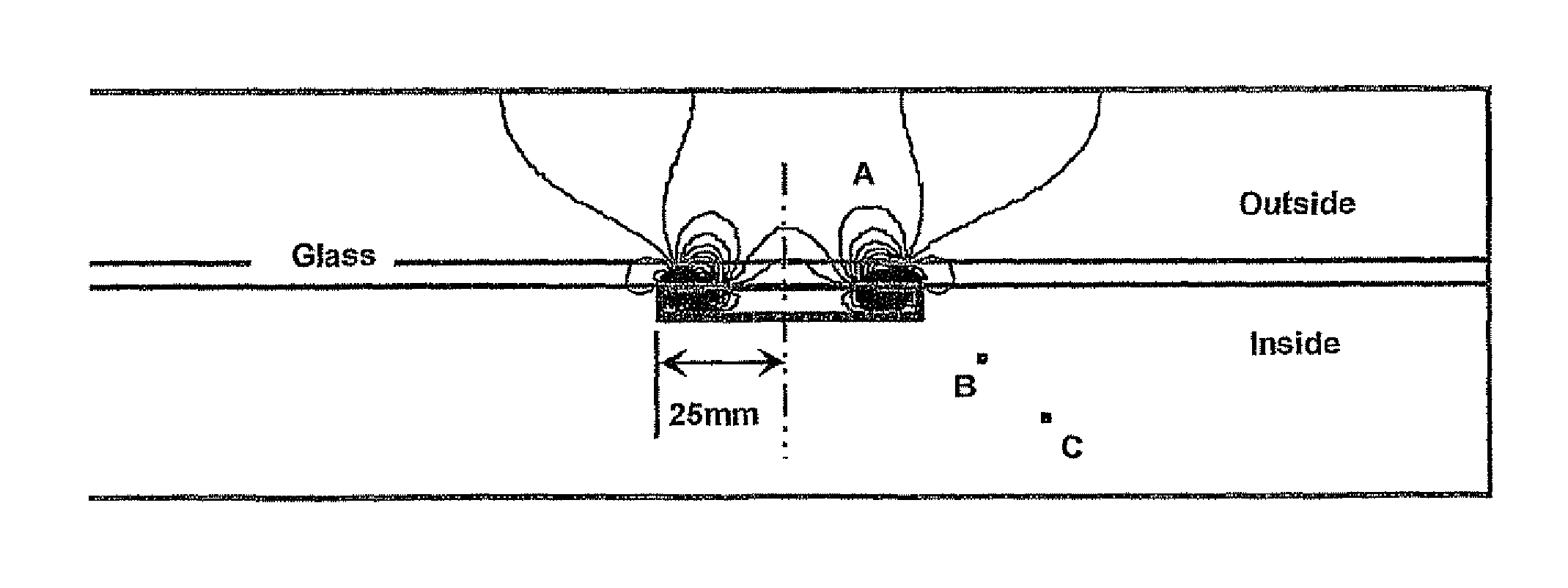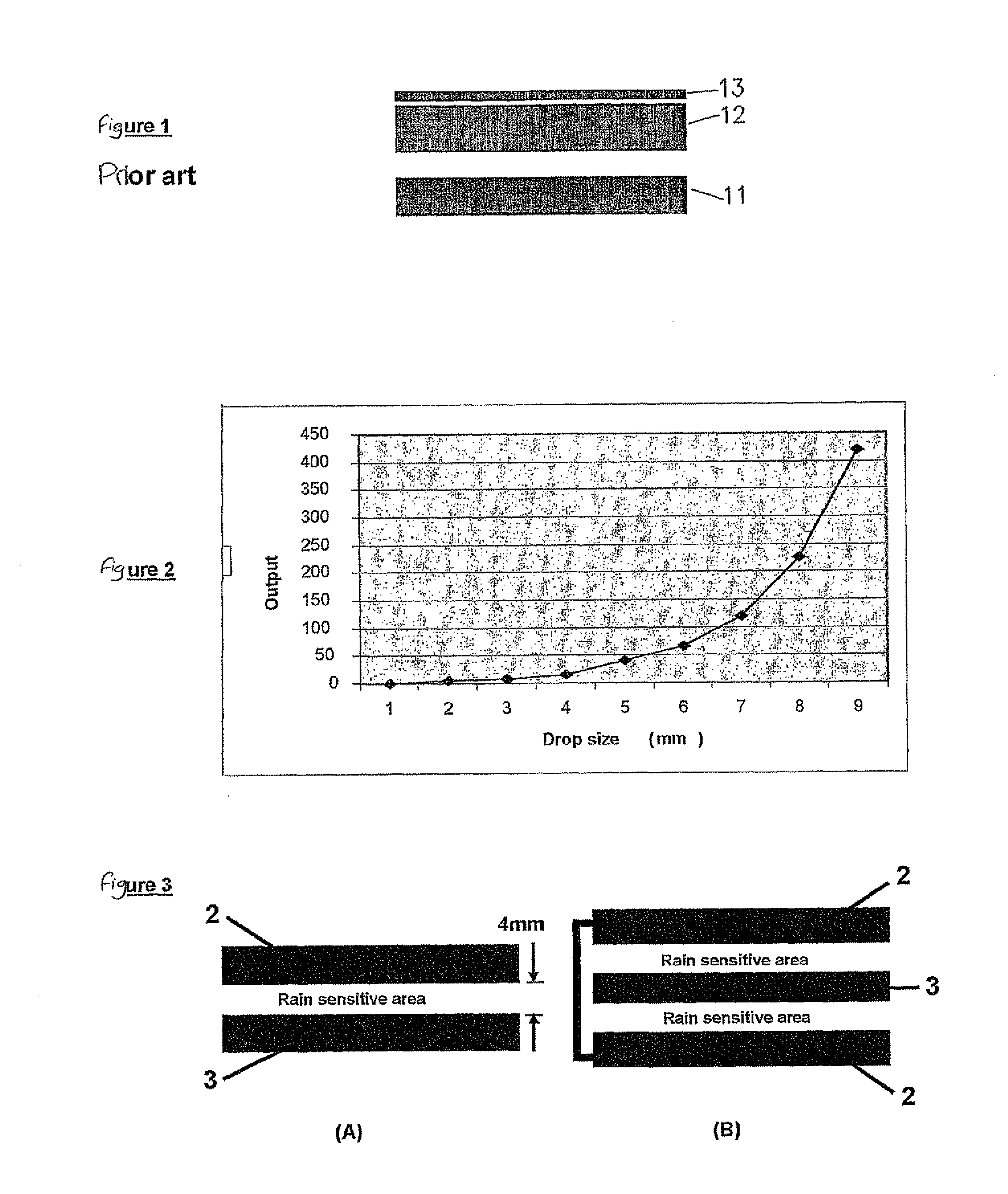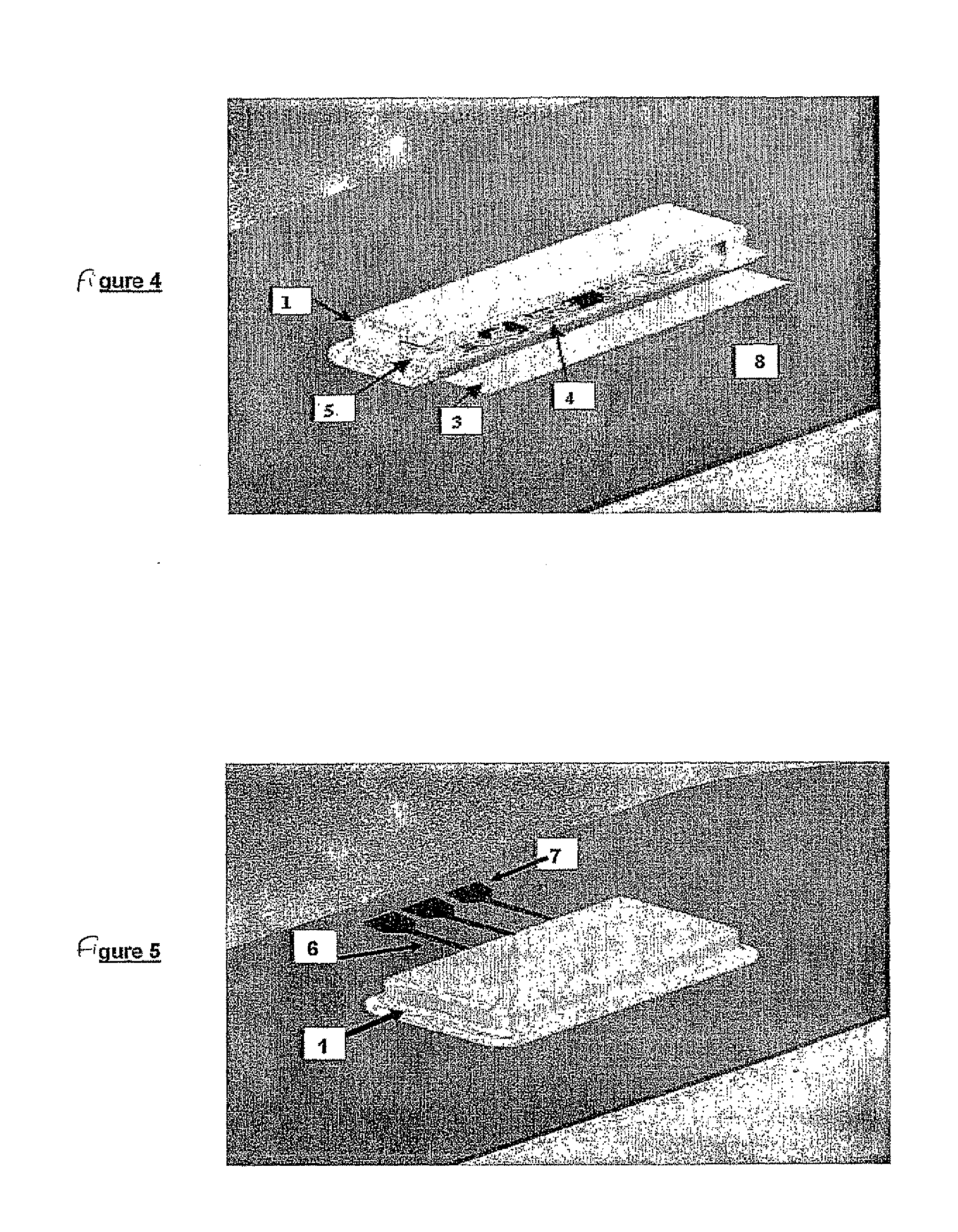Sealed Capacitive Rain Sensor
a capacitive rain sensor and sealing technology, applied in the direction of resistance/reactance/impedence, vehicle cleaning, instruments, etc., can solve the problems of low-level signal susceptible to parasitic effects, capacitive rain sensors have not matured enough to be accepted by the automotive industry, and are rarely considered viable for deploying sensing plates, etc., to achieve superior sensitivity and minimize false wipes
- Summary
- Abstract
- Description
- Claims
- Application Information
AI Technical Summary
Benefits of technology
Problems solved by technology
Method used
Image
Examples
Embodiment Construction
[0044]FIG. 2 illustrates the measured output voltage in a capacitive rain sensor using the plates shown in FIG. 3-a deposited on a glass of 5.5 mm thick, as a function of sensed droplet diameter. Even though the measured values relate to small droplets sprayed on the sensitive area. A practical consequence is that mist, such as from passing traffic on wet roads, results in a hard-to-discriminate signal which, unlike raindrops, also builds up slowly. As a result, attempts to detect mist with prior art capacitive rain sensors by merely lowering the decision threshold, or increasing gain, result in false wipes due to parasitic signals that were negligible when dealing with raindrop detection only. For example, in tests, false wipes (i.e., unnecessary actuation of the wipers) were encountered at dusk times, with no apparent reason. This phenomenon only disappeared after the sensing plates were dried and hermetically sealed. Their origin was traced to be the relatively obscure adsorption...
PUM
 Login to View More
Login to View More Abstract
Description
Claims
Application Information
 Login to View More
Login to View More - R&D
- Intellectual Property
- Life Sciences
- Materials
- Tech Scout
- Unparalleled Data Quality
- Higher Quality Content
- 60% Fewer Hallucinations
Browse by: Latest US Patents, China's latest patents, Technical Efficacy Thesaurus, Application Domain, Technology Topic, Popular Technical Reports.
© 2025 PatSnap. All rights reserved.Legal|Privacy policy|Modern Slavery Act Transparency Statement|Sitemap|About US| Contact US: help@patsnap.com



